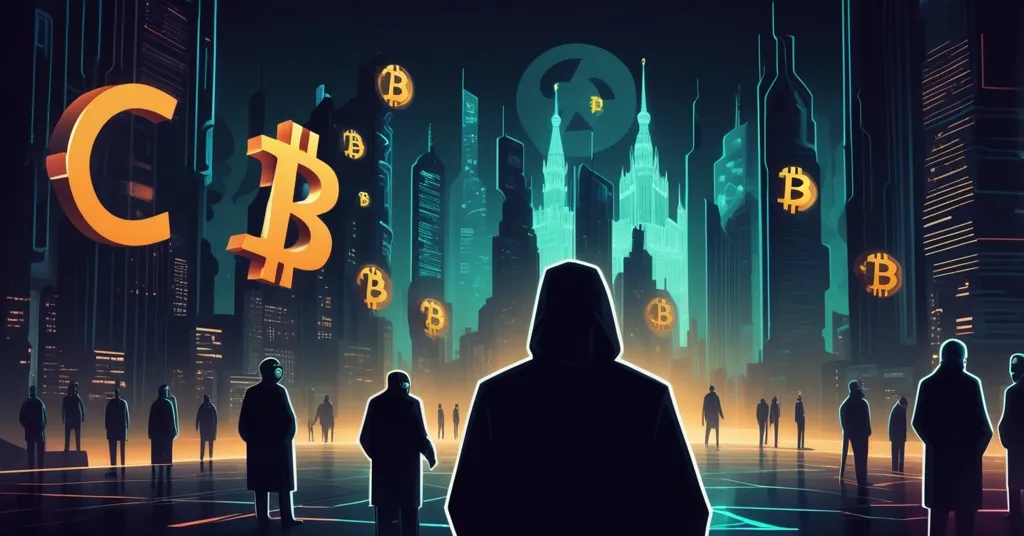Digital Ruble Fraud Surges in Russia Ahead of Pension Payments Rollout

CBDC Fraud Spikes in Russia as Digital Ruble Pension Payments Approach
Russia’s race toward a digital financial future with its Central Bank Digital Currency (CBDC), the digital ruble, is stumbling out of the gate as fraudsters exploit public confusion. With Moscow gearing up to disburse pensions and social benefits in this new currency starting October 1, the Central Bank of Russia is raising red flags about a surge in scams targeting the uninformed, particularly in regions like Rostov Oblast. This clash of innovation and deception paints a messy picture of a nation trying to modernize its money while battling the dark underbelly of digital transformation.
- Fraud Surge: Digital ruble scams explode in Rostov Oblast with fraudsters posing as Central Bank staff.
- Rollout Plans: Pilot payments for social benefits kick off October 1, full nationwide adoption targeted for September 2026.
- Public Skepticism: Pensioners fear forced adoption despite assurances of optional use.
What Exactly is the Digital Ruble?
Before diving into the chaos, let’s break down the digital ruble. Imagine a digital version of the cash in your pocket, but instead of paper bills, it lives on your phone or a card, fully controlled by the government. It’s a state-backed currency, designed for seamless transactions using contactless payment technology—think tapping your phone or card to pay, like Apple Pay, but for a government-issued digital coin. Unlike Bitcoin, with its decentralized, privacy-first ethos, the digital ruble is centralized, trackable, and tied to Russia’s financial system. It’s a tool for modernizing payments, yes, but also a geopolitical weapon to dodge Western sanctions by reducing reliance on systems like SWIFT.
Fraud Wave Crashes into Rostov Oblast
In Rostov Oblast, a southern region of Russia, the Central Bank’s branch has sounded the alarm on a sharp uptick in CBDC-related scams. Fraudsters are weaponizing public ignorance, using social media messages and fake websites decked out with stolen Central Bank logos to dupe victims. Their tactics are downright vile, preying on the vulnerable with ruthless precision. They impersonate bank officials, peddling fictitious “digital ruble investment programs” that promise easy entry with low costs—only to claim the price will soon skyrocket, pressuring victims to act fast. Once hooked, people are coerced into handing over personal data and depositing funds into accounts controlled by these crooks. It’s a classic con, turbocharged by the hype around a currency most Russians can’t even access yet, as noted in recent reports on rising CBDC fraud cases.
“Fraudsters pose as Central Bank staff, claiming to offer people access to digital ruble investment programs. They encourage people to join this program as quickly as possible, while the entry threshold is low. They also claim that this entry threshold will soon be raised by a significant amount.” – Central Bank, Rostov Oblast branch
Russia’s monetary authority has slammed the door on these claims, making it crystal clear: there are no legitimate digital ruble investment schemes. The CBDC remains in pilot mode, launched in August 2023 to test wallet creation, transfers, and merchant payments, and it’s inaccessible to the average citizen until the mass rollout. Yet, with only 7% of Russians feeling well-informed about the digital ruble per a Moscow Times survey, the knowledge gap is a scammer’s goldmine. Nearly half of respondents have just a vague grasp of the concept, making them easy prey for slick lies spread online. This isn’t just greed at work—it’s a systemic lack of awareness, exploited with brutal efficiency, as detailed in Central Bank reports on scam tactics in Rostov Oblast.
Picture this: a pensioner in Rostov Oblast gets a call from a supposed “Central Bank official” promising a golden ticket to early digital ruble riches. They send a small deposit, hoping for a big return, only to realize they’ve been bled dry by a faceless thief. These aren’t isolated hypotheticals—scams like this are spiking before most Russians even know what a digital ruble looks like. If this doesn’t scream the need for urgent public education, nothing will, with community discussions like those on Reddit highlighting fraud experiences in Rostov Oblast.
Digital Ruble Rollout: A Tight Timeline
While scammers run rampant, the Russian government and Ministry of Finance are pressing forward with ambitious plans to integrate the digital ruble into everyday life. Starting October 1, a pilot program will disburse social benefit payments in this new currency. The scope expands dramatically by January 1, 2026, when all federal budget payments—think pensions, scholarships, and public sector salaries—will shift to digital rubles. The full nationwide rollout is pegged for September 1, 2026, though Central Bank Governor Elvira Nabiullina has floated a potential mass introduction as early as July 2025 if pilot testing proves successful. Major banks and merchants must support CBDC services by fall 2025, while smaller businesses get until the end of 2028 to comply, according to updates on the digital ruble rollout timeline.
It’s a breakneck schedule for a nation where trust in new financial systems is already shaky at best. The pilot phase, while limited, is critical—it’s the first real taste of how the digital ruble will function for ordinary citizens. But with fraud casting a long shadow, the question looms: will early hiccups sour public appetite before the main course even arrives?
Public Distrust and Privacy Nightmares
Beyond the scams, a deeper resistance festers, especially among pensioners who fear being dragged into a system they neither understand nor want. A Moscow Times survey paints a grim picture: 51% of Russians are unwilling to adopt the digital ruble. Drilling down, 12% worry about personal data leaks, 8% dread government surveillance, and 6% balk at the internet dependency required to use it. Legal expert Diana Galimova nails the root cause, pointing to a historic distrust in government promises about privacy. Without hands-on experience, Russians are left vulnerable not just to scams, but to propaganda and misinformation swirling online, a sentiment echoed in surveys on public resistance among pensioners.
The Kremlin’s financial arm is pushing back, insisting no one will be cornered into using the CBDC. Cash and traditional bank transfers will remain options, they claim. But let’s be honest—Russians seem to trust their government with digital money about as much as they’d trust a bear with their picnic basket. Words alone won’t soothe these fears, especially when past financial scams, like the infamous MMM pyramid scheme of the 1990s that wiped out millions, still linger in collective memory. History shows Russians have been burned before, and the digital ruble feels like another potential inferno to many, with platforms like Quora capturing varied opinions on these scams.
“Nobody will be forced to use the digital ruble.” – Central Bank officials
A Central Bank spokesperson tried to downplay the skepticism, likening it to early pushback against bank cards or fast-payment systems—temporary growing pains, they argue. But with fraud cases spiking before most wallets even hold a digital kopeck, this feels less like a hiccup and more like a full-blown fever. Protecting vulnerable citizens from losing life savings to a well-timed lie isn’t just a PR challenge—it’s a moral imperative.
Geopolitical Stakes: Digital Ruble as a Sanctions Shield
Zooming out, the digital ruble isn’t just a tech upgrade—it’s a calculated move in a high-stakes geopolitical chess game. Russia’s push for a state-backed digital currency is explicitly tied to evading Western sanctions and reducing dependence on global financial systems like SWIFT, which have been weaponized against Moscow in recent years. By rolling out a CBDC, the Kremlin aims to assert financial sovereignty, creating a parallel monetary track that’s harder for external powers to choke. But this ambition makes the fraud epidemic a potential sabotage vector, eroding confidence in a project already under international scrutiny, as explored in analyses of Russia’s geopolitical strategy with the digital ruble.
Contrast this with China’s digital yuan, which has seen broader adoption—over 260 million wallets created by mid-2023, per official reports—with less reported public resistance, though privacy concerns still simmer. Russia’s journey differs due to its unique blend of domestic skepticism and external pressures. If scams continue to taint the digital ruble’s image, they could undermine not just public trust, but Moscow’s broader strategy to insulate its economy. This isn’t merely a domestic tech rollout; it’s a battlefield where every lost ruble to fraud is a blow to national resilience.
Digital Ruble vs. Bitcoin: A Privacy Paradox
From a crypto perspective, the digital ruble raises eyebrows among those of us who champion decentralization. Bitcoin and its ilk were born from a rejection of centralized control, offering a trustless system where no government can track or seize your funds—well, unless you’re careless with your private keys. The digital ruble, by contrast, is the antithesis: every transaction is visible to the state, every balance subject to oversight. For privacy hawks, this isn’t progress—it’s a step backward, no matter how slick the tech.
Playing devil’s advocate, though, could the digital ruble’s woes ironically spark interest in decentralized alternatives like Bitcoin among Russians? If state-controlled digital money proves untrustworthy—whether through fraud or surveillance—some might turn to BTC as a safer haven. On the flip side, CBDCs could streamline certain payments and offer stability that volatile cryptocurrencies lack. But let’s not kid ourselves: no amount of efficiency will sway a Bitcoin maximalist who sees government fingerprints on money as the ultimate red flag. The philosophical clash between centralized control and untamable freedom remains unresolved, and Russia’s experiment might just sharpen that debate, especially as fraud impacts CBDC adoption rates.
Navigating the Road Ahead
So, where does this leave Russia’s grand digital experiment? The digital ruble holds promise as a tool to align with global CBDC trends and shield the nation from economic isolation. But the path is littered with landmines—fraud, distrust, and a desperate need for public education. If Moscow doesn’t ramp up security and awareness campaigns, this bold innovation risks becoming a national fiasco. No tech wizardry can save a system if the people it’s built for are too scared—or too scarred—to touch it.
Stepping back, this saga underscores a universal truth in the realm of digital finance: innovation without trust is a house of cards. Russia has a shot to carve out a lead in the CBDC race, but only if it outsmarts the scammers and wins over its own citizens. As the world watches, one can’t help but wonder if the real lesson here is the enduring allure of Bitcoin’s untamable freedom—a reminder that true financial sovereignty might not come from a government server, but from a decentralized code no authority can touch.
Key Questions and Takeaways on Russia’s Digital Ruble Challenge
- How are fraudsters exploiting the digital ruble rollout?
They’re leveraging social media, fake websites with pilfered Central Bank logos, and impersonation schemes to pitch bogus investment programs, stealing personal data and funds from unsuspecting citizens. - What’s the timeline for integrating the digital ruble into public payments?
Pilot social benefit payments begin October 1, expanding to all federal budget payments like pensions by January 2026, with a full nationwide rollout slated for September 2026, possibly sooner if testing succeeds. - Are Russians being forced to adopt the digital ruble?
No, the Central Bank asserts usage is optional, with cash and bank transfers still available, though deep public skepticism about these assurances persists. - What risks does rising CBDC fraud pose for adoption?
It threatens to shatter public trust, slow acceptance, and demands urgent education and security measures to protect citizens and preserve the project’s credibility. - How do geopolitical motives complicate the digital ruble’s challenges?
As a tool to evade Western sanctions, the digital ruble’s fraud issues could weaken Russia’s push for financial independence, turning a strategic asset into a liability under global scrutiny. - Could CBDC struggles drive interest in decentralized crypto like Bitcoin?
Possibly, as distrust in state-controlled digital money might push some Russians toward privacy-focused alternatives, highlighting the enduring appeal of decentralization.



